fatty acid
Fatty acid refers to the molecule with a carboxyl group of aliphatic organic acids. In the mineral processing industry, the department of flotation use the hydroxide collector. The general formula is R-COOH, and the R group is a linear or branched akyl, alkenyl or cycloalkyl group. According to the length of carbon chain, properties varies, in addition to use as the collector, but also as a foaming agent, inhibitors and dispersants.
Natural animal and vegetable fats and oils are the main source of fatty acids. The fatty is decomposed into fatty acids or fatty acid soap(sodium soap or potassium soap) after hydrolysis or saponification, the soap generates fatty acids through acidification. Alkaline washing with some crude oil fraction, sodium naphthenate soap, by-product, can be obtained , and then naphthenic acid can be obtained from soap acidification. Mixed fatty acids or pure single fatty acids can be obtained from deeply oxidizing and separating refined kerosene, paraffin and other hydrocarbons.
According to the length of carbon chain, fatty acids customarily divided into two kinds: lower fatty acids and higher fatty acids. The number of carbon atoms in the molecule of less than ten is a lower fatty acid, and the number of carbon atoms of ten or more is a higher fatty acid. Fatty acids containing unsaturated bonds in the carbon chain(such as double bond) is called unsaturated fatty acids, while do not containing unsaturated bonds are called saturated fatty acids. Natural unsaturated fatty acids mainly includes oleic acid, linoleic acid, linolenic acid and ricinoleic acid. Natural saturated fatty acids mainly includes stearic acid, palmitic acid, cinnamic acid, lauric acid, capric acid, caprylic acid and caproic acid and the like. Higher fatty acids have higher foam stability than lower fatty acids. For example, the sodium salt of oleic acid, linoleic acid and stearic acid can form a stable foam. And the concentration of the medicament in the foam layer is higher than that in the pulp. When the concentration of different solutions of pharmaceutical agents achieves a certain value, the solution significantly formed micelles. When a single molecule or ion began to accumulate into the orderly arrangement of the molecular weight, the drug concentration is called the "critical micelle concentration."This concentration has a close relationship with the role of flotation, for example, the adsorption of sodium oleate by magnetite increased with the concentration of the agent increased, and the buoyancy also increased. However, when the concentration of the drug increased to near the critical micelle concentration, the floatability decreased significantly, even to zero.
- Structure:

- Chemical Name:HEXACOSANOIC ACID
- CAS:506-46-7
- MF:C26H52O2
- Structure:

- Chemical Name:4-CYCLOHEXYLBUTYRIC ACID
- CAS:4441-63-8
- MF:C10H18O2
- Structure:

- Chemical Name:12-HYDROXYSTEARIC ACID
- CAS:106-14-9
- MF:C18H36O3
- Structure:
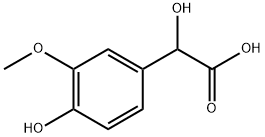
- Chemical Name:4-Hydroxy-3-methoxymandelic acid
- CAS:55-10-7
- MF:C9H10O5
- Structure:
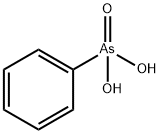
- Chemical Name:PHENYLARSONIC ACID
- CAS:98-05-5
- MF:C6H7AsO3
- Structure:
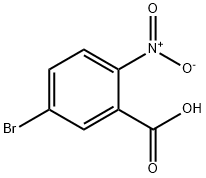
- Chemical Name:5-BROMO-2-NITRO-BENZOIC ACID
- CAS:6950-43-2
- MF:C7H4BrNO4
- Structure:
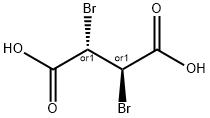
- Chemical Name:meso-2,3-Dibromosuccinic acid
- CAS:608-36-6
- MF:C4H4Br2O4
- Structure:
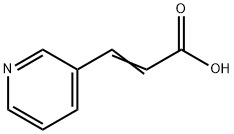
- Chemical Name:3-Pyridineacrylic acid
- CAS:1126-74-5
- MF:C8H7NO2
- Structure:
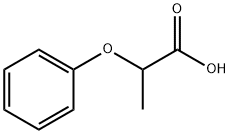
- Chemical Name:2-Phenoxypropionic acid
- CAS:940-31-8
- MF:C9H10O3
- Structure:

- Chemical Name:3-Hydroxy-4-methoxyphenylacetic acid
- CAS:1131-94-8
- MF:C9H10O4
- Structure:

- Chemical Name:TRIACONTANOIC ACID
- CAS:506-50-3
- MF:C30H60O2
- Structure:

- Chemical Name:TRANS-2-PENTENOIC ACID
- CAS:13991-37-2
- MF:C5H8O2
- Structure:

- Chemical Name:Nervonic acid
- CAS:506-37-6
- MF:C24H46O2
- Structure:

- Chemical Name:ALPHA-KETOBUTYRIC ACID SODIUM SALT
- CAS:2013-26-5
- MF:C4H5NaO3
- Structure:

- Chemical Name:VALERIC ANHYDRIDE
- CAS:2082-59-9
- MF:C10H18O3
- Structure:

- Chemical Name:3-(4-Chlorobenzoyl)propionic acid
- CAS:3984-34-7
- MF:C10H9ClO3
- Structure:

- Chemical Name:SODIUM 2-HYDROXYBUTYRATE
- CAS:5094-24-6
- MF:C4H7NaO3
- Structure:

- Chemical Name:4-(P-TOLYL)BUTYRIC ACID
- CAS:4521-22-6
- MF:C11H14O2
- Structure:

- Chemical Name:HEXADECANEDIOIC ACID
- CAS:505-54-4
- MF:C16H30O4
- Structure:
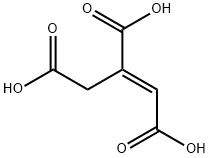
- Chemical Name:TRANS-ACONITIC ACID
- CAS:4023-65-8
- MF:C6H6O6
- Structure:
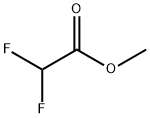
- Chemical Name:METHYL DIFLUOROACETATE
- CAS:433-53-4
- MF:C3H4F2O2
- Structure:

- Chemical Name:10,12-PENTACOSADIYNOIC ACID
- CAS:66990-32-7
- MF:C25H42O2
- Structure:
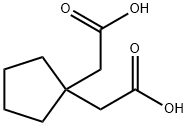
- Chemical Name:Cyclopentane-1,1-diacetic acid
- CAS:16713-66-9
- MF:C9H14O4
- Structure:
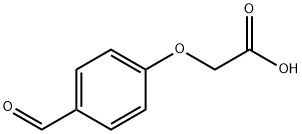
- Chemical Name:4-Formylphenoxyacetic acid
- CAS:22042-71-3
- MF:C9H8O4
- Structure:

- Chemical Name:4-Hydroxyphenylpyruvic acid
- CAS:156-39-8
- MF:C9H8O4
- Structure:

- Chemical Name:beta-Hydroxyisovaleric Acid
- CAS:625-08-1
- MF:C5H10O3
- Structure:

- Chemical Name:Diglycolic acid
- CAS:110-99-6
- MF:C4H6O5
- Structure:
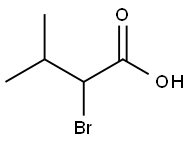
- Chemical Name:2-Bromo-3-methylbutyric acid
- CAS:565-74-2
- MF:C5H9BrO2
- Structure:
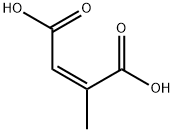
- Chemical Name:Citraconic acid
- CAS:498-23-7
- MF:C5H6O4
- Structure:

- Chemical Name:5-HEXYNOIC ACID
- CAS:53293-00-8
- MF:C6H8O2
- Structure:
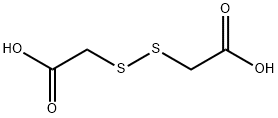
- Chemical Name:THIODIGLYCOLIC ACID
- CAS:505-73-7
- MF:C4H6O4S2
- Structure:

- Chemical Name:trans-3-Hexenoic acid
- CAS:1577-18-0
- MF:C6H10O2
- Structure:
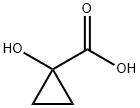
- Chemical Name:1-Hydroxy-1-cyclopropanecarboxylic acid
- CAS:17994-25-1
- MF:C4H6O3
- Structure:

- Chemical Name:3,3'-Thiodipropionic acid
- CAS:111-17-1
- MF:C6H10O4S
- Structure:

- Chemical Name:Iodoacetic acid
- CAS:64-69-7
- MF:C2H3IO2
- Structure:
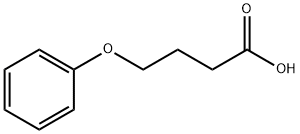
- Chemical Name:4-Phenoxybutanoic acid
- CAS:6303-58-8
- MF:C10H12O3
- Structure:
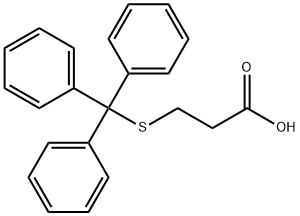
- Chemical Name:S-TRITYL-3-MERCAPTOPROPIONIC ACID
- CAS:27144-18-9
- MF:C22H20O2S
- Structure:
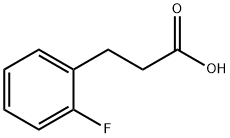
- Chemical Name:3-(2-Fluorophenyl)propionic acid
- CAS:1643-26-1
- MF:C9H9FO2
- Structure:
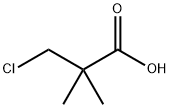
- Chemical Name:3-CHLORO-2,2-DIMETHYLPROPIONIC ACID
- CAS:13511-38-1
- MF:C5H9ClO2
- Structure:
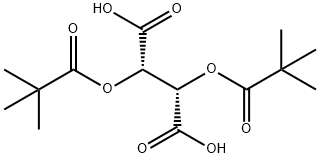
- Chemical Name:(+)-DIPIVALOYL-D-TARTARIC ACID
- CAS:76769-55-6
- MF:C14H22O8
- Structure:
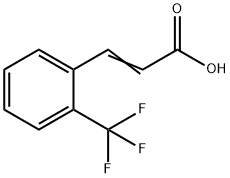
- Chemical Name:2-(Trifluoromethyl)cinnamic acid
- CAS:2062-25-1
- MF:C10H7F3O2
- Structure:
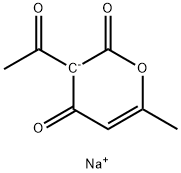
- Chemical Name:Sodium dehydroacetate
- CAS:4418-26-2
- MF:C8H7NaO4
- Structure:
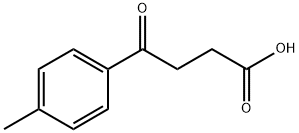
- Chemical Name:3-(4-Methylbenzoyl)propionic acid
- CAS:4619-20-9
- MF:C11H12O3
- Structure:
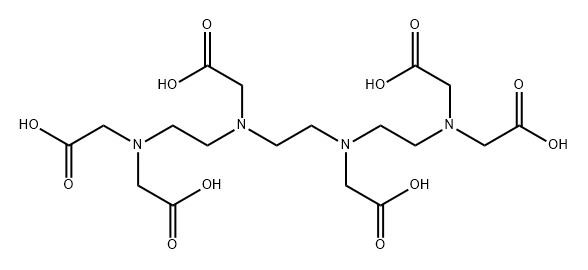
- Chemical Name:TRIETHYLENETETRAMINE-N,N,N',N'',N''',N'''-HEXAACETIC ACID
- CAS:869-52-3
- MF:C18H30N4O12
- Structure:

- Chemical Name:6-Heptynoic acid
- CAS:30964-00-2
- MF:C7H10O2
- Structure:

- Chemical Name:DL-3-Hydroxybutyric acid sodium salt
- CAS:150-83-4
- MF:C4H7NaO3
- Structure:

- Chemical Name:TRANS-2-OCTENOIC ACID
- CAS:1871-67-6
- MF:C8H14O2
- Structure:
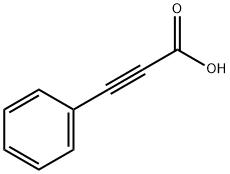
- Chemical Name:Phenylpropiolic acid
- CAS:637-44-5
- MF:C9H6O2
- Structure:
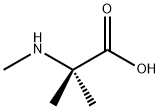
- Chemical Name:N-ME-AIB-OH HCL
- CAS:2566-34-9
- MF:C5H11NO2
- Structure:
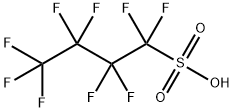
- Chemical Name:Nonafluorobutane-1-sulfonic acid
- CAS:375-73-5
- MF:C4HF9O3S
- Structure:
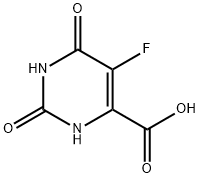
- Chemical Name:5-Fluoroorotic acid
- CAS:703-95-7
- MF:C5H3FN2O4
- Structure:

- Chemical Name:5-Chlorovaleric acid
- CAS:1119-46-6
- MF:C5H9ClO2
- Structure:

- Chemical Name:Undecanedioic acid
- CAS:1852-04-6
- MF:C11H20O4
- Structure:

- Chemical Name:10-UNDECYNOIC ACID
- CAS:2777-65-3
- MF:C11H18O2
- Structure:
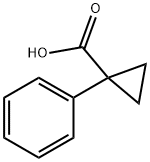
- Chemical Name:1-Phenyl-1-cyclopropanecarboxylic acid
- CAS:6120-95-2
- MF:C10H10O2
- Structure:

- Chemical Name:ISOVALERIC ANHYDRIDE
- CAS:1468-39-9
- MF:C10H18O3
- Structure:
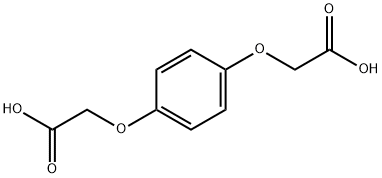
- Chemical Name:HYDROQUINONE-O,O'-DIACETIC ACID
- CAS:2245-53-6
- MF:C10H10O6
- Structure:

- Chemical Name:OCTACOSANOIC ACID
- CAS:506-48-9
- MF:C28H56O2
- Structure:
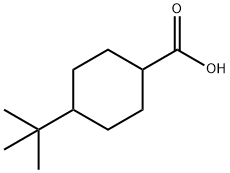
- Chemical Name:4-TERT-BUTYLCYCLOHEXANECARBOXYLIC ACID
- CAS:5451-55-8
- MF:C11H20O2
- Structure:
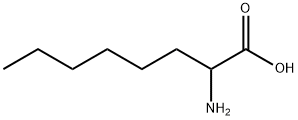
- Chemical Name:DL-2-AMINOOCTANOIC ACID
- CAS:644-90-6
- MF:C8H17NO2
- Structure:
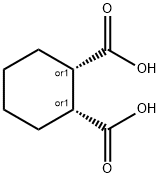
- Chemical Name:cis-Hexahydrophthalic acid
- CAS:610-09-3
- MF:C8H12O4
- Structure:

- Chemical Name:2-Butoxyacetic acid
- CAS:2516-93-0
- MF:C6H12O3
- Structure:

- Chemical Name:2-HYDROXYHEXADECANOIC ACID
- CAS:764-67-0
- MF:C16H32O3
- Structure:

- Chemical Name:ELAIDIC ACID
- CAS:112-79-8
- MF:C18H34O2
- Structure:

- Chemical Name:DL-alpha-Methoxyphenylacetic acid
- CAS:7021-09-2
- MF:C9H10O3
- Structure:

- Chemical Name:3-DIMETHYLAMINOPROPIONIC ACID HYDROCHLORIDE
- CAS:14788-12-6
- MF:C5H12ClNO2
- Structure:
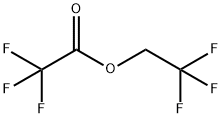
- Chemical Name:2,2,2-TRIFLUOROETHYL TRIFLUOROACETATE
- CAS:407-38-5
- MF:C4H2F6O2
- Structure:
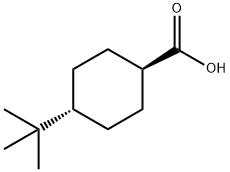
- Chemical Name:trans-4-tert-Butylcyclohexanecarboxylic acid
- CAS:943-29-3
- MF:C11H20O2
- Structure:

- Chemical Name:4-BENZOYLBUTYRIC ACID
- CAS:1501-05-9
- MF:C11H12O3
- Structure:
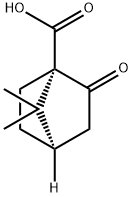
- Chemical Name:(S)-(+)-KETOPINIC ACID
- CAS:40724-67-2
- MF:C10H14O3
- Structure:
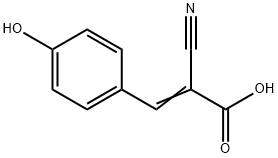
- Chemical Name:ALPHA-CYANO-4-HYDROXYCINNAMIC ACID
- CAS:28166-41-8
- MF:C10H7NO3
- Structure:
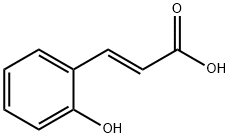
- Chemical Name:2-HYDROXYCINNAMIC ACID
- CAS:614-60-8
- MF:C9H8O3
- Structure:
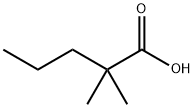
- Chemical Name:2,2-DIMETHYLVALERIC ACID
- CAS:1185-39-3
- MF:C7H14O2
- Structure:
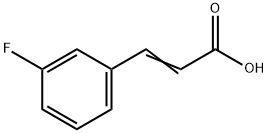
- Chemical Name:3-Fluorocinnamicacid
- CAS:458-46-8
- MF:C9H7FO2
- Structure:

- Chemical Name:TRAUMATIC ACID
- CAS:6402-36-4
- MF:C12H20O4
- Structure:
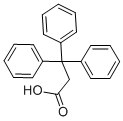
- Chemical Name:3,3,3-Triphenylpropionic acid
- CAS:900-91-4
- MF:C21H18O2
- Structure:

- Chemical Name:PALMITOLEIC ACID
- CAS:373-49-9
- MF:C16H30O2
- Structure:
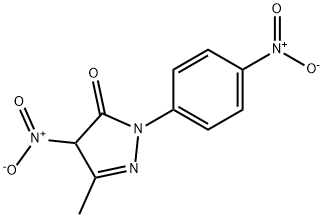
- Chemical Name:PICROLONIC ACID
- CAS:550-74-3
- MF:C10H8N4O5
- Structure:

- Chemical Name:AZELAIC ACID MONOMETHYL ESTER
- CAS:2104-19-0
- MF:C10H18O4
- Structure:
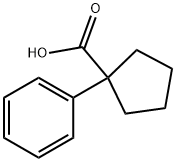
- Chemical Name:1-Phenylcyclopentanecarboxylic acid
- CAS:77-55-4
- MF:C12H14O2
- Structure:
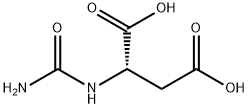
- Chemical Name:CARBAMOYL-DL-ASPARTIC ACID
- CAS:923-37-5
- MF:C5H8N2O5
- Structure:
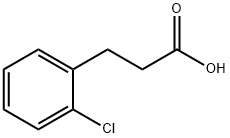
- Chemical Name:3-(2-CHLOROPHENYL)PROPIONIC ACID
- CAS:1643-28-3
- MF:C9H9ClO2
- Structure:
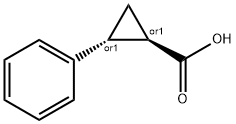
- Chemical Name:TRANS-2-PHENYL-1-CYCLOPROPANECARBOXYLIC ACID
- CAS:939-90-2
- MF:C10H10O2
- Structure:
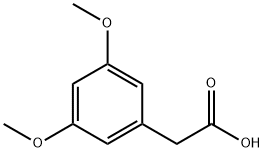
- Chemical Name:3,5-DIMETHOXYPHENYLACETIC ACID
- CAS:4670-10-4
- MF:C10H12O4
- Structure:
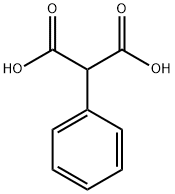
- Chemical Name:Phenylmalonic acid
- CAS:2613-89-0
- MF:C9H8O4
- Structure:
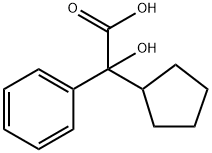
- Chemical Name:alpha-Cyclopentylmandelic acid
- CAS:427-49-6
- MF:C13H16O3
- Structure:
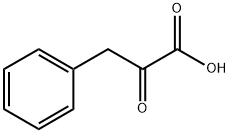
- Chemical Name:3-Phenylpyruvic acid
- CAS:156-06-9
- MF:C9H8O3
- Structure:

- Chemical Name:Ricinoleic acid
- CAS:141-22-0
- MF:C18H34O3
- Structure:
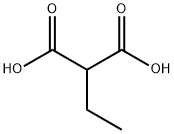
- Chemical Name:ETHYLMALONIC ACID
- CAS:601-75-2
- MF:C5H8O4
- Structure:
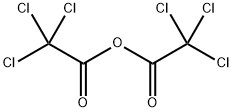
- Chemical Name:TRICHLOROACETIC ANHYDRIDE
- CAS:4124-31-6
- MF:C4Cl6O3
- Structure:
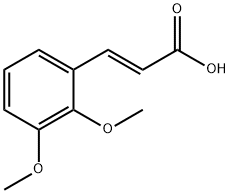
- Chemical Name:trans-2,3-Dimethoxycinnamic acid
- CAS:7345-82-6
- MF:C11H12O4
- Structure:

- Chemical Name:3-(4-METHOXYBENZOYL)PROPIONIC ACID
- CAS:3153-44-4
- MF:C11H12O4
- Structure:

- Chemical Name:HEPTANOIC ANHYDRIDE
- CAS:626-27-7
- MF:C14H26O3
- Structure:
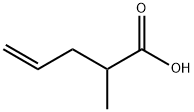
- Chemical Name:2-METHYL-4-PENTENOIC ACID
- CAS:1575-74-2
- MF:C6H10O2
- Structure:
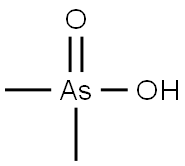
- Chemical Name:CACODYLIC ACID
- CAS:75-60-5
- MF:C2H7AsO2
- Structure:
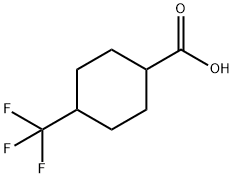
- Chemical Name:4-(Trifluoromethyl)cyclohexanecarboxylic acid
- CAS:95233-30-0
- MF:C8H11F3O2
- Structure:
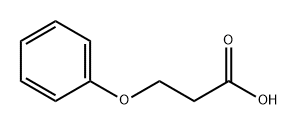
- Chemical Name:3-Phenoxypropionic acid
- CAS:7170-38-9
- MF:C9H10O3
- Structure:
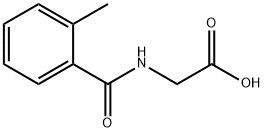
- Chemical Name:2-METHYLHIPPURIC ACID
- CAS:42013-20-7
- MF:C10H11NO3
- Structure:
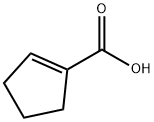
- Chemical Name:1-Cyclopentenecarboxylic acid
- CAS:1560-11-8
- MF:C6H8O2
- Structure:

- Chemical Name:DL-GAMMA-AMINO-B-HYDROXYBUTYRIC ACIDCRYS TALLINE
- CAS:924-49-2
- MF:C4H9NO3